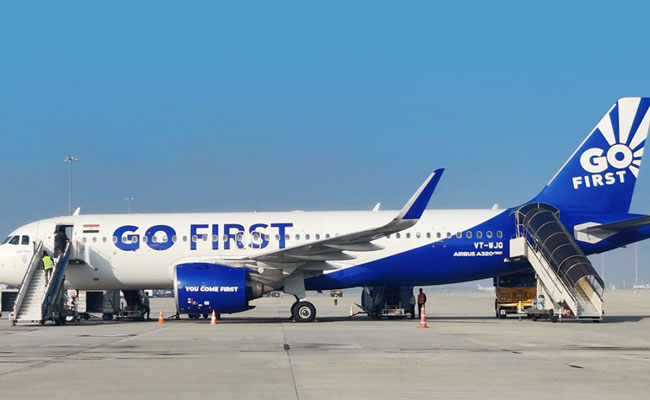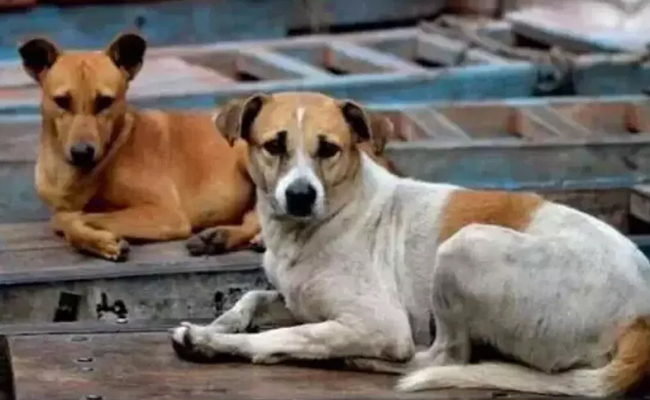This week, Go Airlines India Ltd became the latest casualty in the struggle for India’s skies. It is not the first high-profile carrier to go bankrupt—and it will, possibly, not be the last.
In the past few years, Indian airlines have ordered billions of dollars worth of aircraft, fuelling fierce airspace wars in the world’s most populous country. Even before the pandemic devastated the industry, the struggle for survival was fierce.
Rich entrepreneurs who wanted to get into a growing industry and liked the idea of having a high-status business like running an airline have been especially drawn to aviation. However, it has been a tough business for them to get into. Go First, which was run by Nusli Wadia’s group, is the third well-known airline that was mostly owned by a millionaire and stopped flying after an 11-year run.
Why Did Go Come to a Halt?
Go, once the country’s third-largest carrier, sought insolvency protection, claiming that Pratt & Whitney had failed to supply parts and replacement engines for the Airbus A320neo jets that form the backbone of its fleet despite being ordered to do so by an arbitration court, forcing it to ground roughly half of its planes. The engine manufacturer, a subsidiary of Raytheon Technologies Corp., has denied the claim.
However, Go has suffered in the past, developing more slowly than rival IndiGo—which currently controls more than half of the domestic market—and borrowing significantly to cover lease rentals, airport dues and payroll during the epidemic when its planes were grounded.
Last year, the airline was forced to postpone a 36-billion-rupee (US$440-million) first share sale as many of its planes remained idle and it is now facing imminent creditor defaults, with obligations totalling Rs 114.6 billion (US $1.4 billion).
An Indian court reserved judgment on Thursday, delaying a verdict in response to the carrier’s request for relief from lessors who want their planes returned.
Which Others Have Given Up?
Kingfisher Airlines, which was created by fugitive beer magnate Vijay Mallya, ceased operations in 2012 after failing to pay its debts to banks, employees, lessors and airports. Jet Airways India Ltd, owned by billionaire Naresh Goyal, has not flown since declaring bankruptcy in 2019. Smaller regional carriers that went bankrupt recently include Air Costa, which ordered 50 Embraer SA jets worth $2.9 billion in 2014 before going bankrupt in 2017.
Why Are There So Many Failures?
The reasons for the demise of Indian airlines differ, but they all boil down to a combination of dirt-cheap tickets, hefty fuel taxes and fierce competition, which has recently been exacerbated by the disruption caused by Covid. On the Booking.com site, a one-way ticket for a 90-minute flight from New Delhi to Mumbai recently cost US$79, as against US$199 for the length of travel from New York to Atlanta.
Jet fuel is taxed by the province in some Indian states by as much as 30%. That is the single-biggest cost for aeroplanes, making up more than half of the costs for some low-cost brands. Big players, such as IndiGo, offer incredibly low prices on routes that their competitors also fly. They do this by using their size to recoup costs on less competitive lines and by taking advantage of economies of scale to lower overhead costs.
Also, the Indian rupee has lost almost 20% of its value against the dollar since the start of 2019. This makes it more expensive to rent planes from other countries.
Is the Government of Any Help?
Different, mostly populist, governments have been afraid to directly help carriers that are having trouble. In fact, governments have, sometimes, pushed airlines to lower prices even more. The last government let foreign airlines invest in local airlines and told states to cut taxes.
During the pandemic, Prime Minister Narendra Modi’s government offered credit lines, but did not give out full loans. Modi promised to keep the government out of business and he proved his credibility by selling Air India Ltd to the Tata Group last year, even though it always lost money. But Modi is running for a third term in next year’s elections, and this could hurt his image as a champion of industry.
Why Always Some New Airline?
The easy answer is that the market is appealing. Half of India’s people are under 30 and, in the coming years, it could become the biggest economy with the fastest growth. In 2016, the country surpassed Japan as the third-biggest domestic aviation market and more domestic companies are starting to fly to other countries.
In the next 20 years, India may have to deal with more than 1.3 billion people a year—up from fewer than 200 million now. The CAPA Centre for Aviation based in Sydney, Australia says that, in about another 40 years’ time, the Indian aviation market will outstrip the size of Las Vegas to reach a size close to that of the US.
Owning a carrier has a certain cachet for growing Indian businesses. Mallya helped glamorize the business by handpicking flight attendants and hiring top models for marketing efforts through Kingfisher, the name of his best-selling beer brand. Naresh Goyal’s Jet Airways’ board of directors includes Bollywood celebrities, with annual general meetings filled of poetry and adoration for Goyal and his family.
Only a year ago, now-deceased entrepreneur Rakesh Jhunjhunwala assembled a team of aviation veterans to launch the country’s newest airline, Akasa Air.
Can Failed Ones Recoup Losses?
While cash-strapped airlines rarely return, there is precedent. SpiceJet, which was owned by billionaire Kalanithi Maran, had to ground its entire fleet after local oil suppliers did not comply with its fuelling requests on credit. Nonetheless, SpiceJet has managed to stay afloat under the current ownership of its original co-founder, Ajay Singh, by renegotiating contracts and discontinuing loss-making routes.
What’s the Next Thing on Cards?
The privatisation of Air India has prepared the stage for further consolidation. The Tata Group owns a majority stake in two local joint ventures—Capital A Bhd’s AirAsia and Singapore Airlines Ltd. It has, however, begun to bring all its brands under one umbrella. In India, that is no guarantee of survival. Both Jet Airways, which acquired budget carrier Air Sahara, and Kingfisher Airlines, which acquired Air Deccan, declared bankruptcy.
In the case of Go, the court may appoint an administrator to oversee the airline while agreements with lenders and lessors are renegotiated. The airline claims it will recover, but all flights have been postponed until at least May 9. Meanwhile, the airline risks losing its trained staff and crew to competitors trying to fill vacancies generated by the pandemic.

Girish Linganna
Let the Truth be known. If you read VB and like VB, please be a VB Supporter and Help us deliver the Truth to one and all.
Bengaluru (PTI): A car parked at an AAI building inauguration venue caught fire on Saturday, triggering brief panic, officials said.
The vehicle was completely gutted in the flames. However, no loss of life or injuries were reported, they said.
The incident occurred during the inauguration programme of the AAI's new building located on the Devanahalli--Sulibele Road near here. The programme was attended by the Deputy Chief Minister D K Shivakumar.
A fire brigade deployed at the venue immediately reached the spot and doused the flames. Officials said the cause of the fire is yet to be ascertained, and an investigation is underway.





